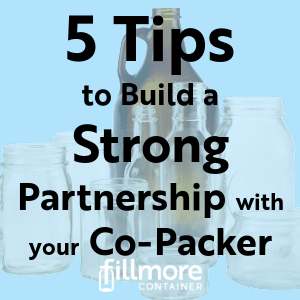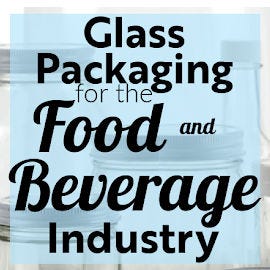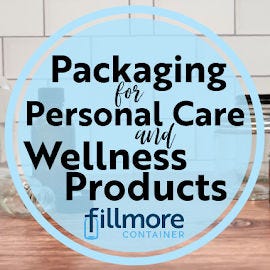
Key Considerations When Moving from a Kitchen to a Co-Packing Facility
There is nothing quite like the freedom of crafting your culinary creations or or personal care formulations in the comfort of your kitchen. But as your small-scale production continues to grow, the limitations of your existing space may become apparent. The time comes when you must make a significant transition — moving your operations from kitchen to a co-packing facility.
Co-packing (short for co-packaging or contract packaging) means hiring a specialized business that provides other companies with packaging and manufacturing services. Due to their existing infrastructure, technology, logistics, and expertise, they can provide your business with efficient, high-quality solutions at a larger scale.
Naturally, outsourcing to a co-packer is an exciting step forward but demands careful consideration. This guide enumerates crucial factors that every aspiring producer must consider to ensure a seamless shift.
Factors To Consider When Moving to a Co-Packing Facility
The decision to move from a small-scale kitchen setup to a co-packing system involves careful research and communication with those businesses you are considering. Asking the right questions is a crucial component of that decision-making process. Here are six essential factors to contemplate when making this transition.
1) Understand Your Best Packaging Options
The first step is understanding the packaging options that are best suited for your particular products and the processes required. Your chosen packaging (container and lid) should be tailored to your product’s processing requirements and suitable storage, ensuring consistent quality from production to consumer’s hands. It must also be compatible with your co-packer’s capabilities (filling, sealing, labeling).
Once the functional aspects are decided, consider the packaging’s appearance, branding, marketing, and any size constraints set by retailers. Inquire about additional measures to increase consumer confidence, like heat shrink bands or labeling that covers both the lid and the jar to deter tampering.
To help you narrow down your options and make the best packaging choices, you may visit our “Food Processing Resources.” You can also check out several articles that address some differences in the functions of lids:
2) Consider the Cost
When seriously considering the move from a kitchen to a co-packing facility, it is helpful to already have effective record keeping in place so that you can accurately state what your current costs are in order to make a meaningful comparison. When selecting a co-packer to work with, understand their pricing options and tiers. What do they consider a “run,” and what are the minimums? Be sure to confirm what services — like labeling and date code printing — are included at each level.
Are there additional fees for boxing, palletizing, and other related operations? Some companies may charge higher rates, but you will be guaranteed better-quality materials and speedy services. Also, inquire about possible transportation and distribution fees. Conducting a thorough expenditure analysis is essential to determine the pricing strategy for your products.
3) Check for Expertise and Capabilities
When assessing a potential partner, it is crucial to thoroughly evaluate their experience and capabilities. The focus should be on aligning their expertise with the type of products the business offers. This entails an examination of the partner’s track record, such as checking the products they have successfully handled before.
It is also imperative to ensure that the partner has the appropriate permits and certifications and that individual workers have the proper training. Do they have the required equipment to meet the production needs? Do they offer assistance with label design and creation or required nutritional values? As your business grows, do they provide meaningful recipe development services? Do they have relationships with distribution entities or connections to help grow your business?
4) Think of Scalability
Efficient scaling involves optimizing production processes for increased output while maintaining product quality that defines your brand. This can also include considering alternate ingredient choices or different sources for your ingredients.
Be sure to clarify your desires or willingness to be flexible with your recipes or sources for your ingredients. Collaborate closely with your selected co-packer to stay informed about any scalability changes and adjustments needed as your business expands.
5) Identify Regulatory & Distribution Requirements
Every country, state, and product category has specific regulations related to food safety, labeling, packaging, and ingredient standards. Complying with these regulations is essential to ensure the legality of your products. The U.S Food & Drug Administration (FDA) site has many resources for both food products and personal care/cosmetics products in addition to insights for industry and contacts for small business assistance.
Co-packing companies should be well-versed in these regulations and can provide valuable guidance, ensuring your products meet all necessary standards. A good partner can help with regular audits, meticulous documentation, and staying updated with regulatory changes. Additionally, distributors and retailers often have specific requirements for items they sell. These requirements are often related to the labeling content, stock levels, price points etc. Some restrictions related to shelf real estate can impact the packaging sizing, or the number of products you are able to display.
6) Consider Location and Logistics
The proximity of the co-packer’s location to distribution centers and logistics networks are key factors. It is essential for minimizing shipping costs and decreasing lead times. A partner strategically positioned near transportation infrastructure contributes to an optimized supply chain, improving overall efficiency and responsiveness to market demands. Are you able to pick up your finished product on your own? Are there restrictions/policies for those picking up finished product? What are their policies on holding finished goods? As you make the switch from your kitchen to a co-packing facility, what impact may that have on your customers?
Tips to Build a Strong Partnership with your Co-Packer
Establishing a seamless and productive partnership with your co-packer is crucial for the success of your business. Keep in mind the following tips:

- Ensure clear communication: Convey your expectations, requirements, and standards. Schedule regular meetings to facilitate understanding and resolve issues promptly. Inquire about any changes.
- Define roles and responsibilities: Establish clear roles and responsibilities for both parties. Define the scope of work, deadlines, freshness, source and quality of ingredients, and deliverables to prevent misunderstandings and ensure that tasks are completed efficiently.
- Visit the facility: Whenever possible, schedule visits to the co-packing facility. Seeing the operations firsthand lets you understand their capabilities, quality control measures, and the overall work environment. It also indicates your continued interest and concern for your product.
- Check quality control: Regularly inspect samples of your products to ensure they meet your specifications. Evaluate ingredient quality. Make sure to address any quality issues promptly and collaboratively to prevent recurrence.
- Promote transparency and trust: Be transparent and detail-oriented about your processes, ingredients, and recipes. Sharing all of the information ensures that your co-packing partner understands the uniqueness of your products.
Premium Packaging Solutions From Fillmore Container
Fillmore Container has established itself as a go-to supplier of packaging materials for the food and beverage industry. We have an extensive inventory of glass jars suitable for preserving various food products like jams and sauces. We also offer an array of metal closures and plastic lid options to ensure your products’ freshness and safety. Fillmore Container has long-standing working relationships with several co-packers, has followed small businesses through their transition to co-packers and understands some of the challenges involved in that process. We can help if you’re moving from a kitchen to a co-packing facility!
Visit our website to see our wide array of food and beverage packaging solutions or Contact us today to learn more about how we can work with your co-packer to empower your business with the finest packaging solutions available.





0 Comments